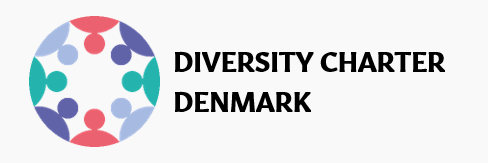KVINFO: Blind Recruitment and Challenging Bias
Unconscious bias refers to how identity markers such as gender, age, and ethnicity can unconsciously lead to prejudice. This can be crucial in a recruitment process, where there’s a tendency to hire candidates who resemble oneself. To combat unconscious bias, KVINFO has introduced blind recruitment.
The new recruitment concept involves the hiring committee disregarding identity markers like name, age, gender, educational background, and other criteria, while focusing more on other relevant qualifications. Blind recruitment can thus be seen as a way to block unconscious biases and as a concept that promotes diversity within an organization.
KVINFO (Denmark’s knowledge center for gender and equality) decided to experiment with blind recruitment to, in their own words, „take their own medicine,‟ as they themselves have experienced challenges with diversity in their organization.
“Equality and diversity are our own values, so we also have to live up to them,” says KVINFO’s Director, Henriette Laursen.
Why Blind Recruitment?
Research from the University of Copenhagen shows that ethnic minority women who wear a headscarf must send 60% more job applications than ethnic Danish women to be invited to the same number of interviews—despite having the same qualifications. This highlights the significant impact of removing identity markers from the application process.
There is also often a tendency to hire people who are similar to oneself. However, this can be problematic if the goal is a diverse workplace. That’s why KVINFO is testing the new recruitment model.
Blind Recruitment in Practice
In practice, blind recruitment means that a program separates and removes certain identity markers, such as age and gender, from applications. Applicants are also asked to remove specific identity markers themselves. Any markers not removed by the applicant are taken out by KVINFO’s interns to ensure the recruitment process is as “blind” as possible.
It’s a demanding process with ongoing learning. During this new recruitment approach, the leadership realized how challenging it is to translate ideology into practice.
Still, Christian Larsen, project manager at KVINFO, believes it’s worth the effort:
“There’s still a lot of work to be done, and it’s hard to blind for every parameter. But we would still recommend everyone to give it a try.”
One of the more challenging parameters is ethnicity.
“Many applicants include their native language — it’s hard to omit, as language skills are a qualification but also an identity marker that can indicate ethnicity,” Henriette explains. She continues:
“In the short term, blind recruitment may seem time-consuming, but in the long term, it makes an organization and workplace better.”
KVINFO’s experience with blind recruitment made them aware of how much we rely on the usual reference points when reviewing applications. Henriette describes it as “losing your compass” and explains how you can really feel the difference from your usual habits.
KVINFO as a More Diverse Workplace
So far, KVINFO has hired nine full-time employees through blind recruitment. For a team that previously consisted primarily of women, the new recruitment initiative has resulted in hiring three male colleagues and six women, and three out of the nine hires have a non-Danish ethnic background.
For KVINFO, it’s about blocking the unconscious biases we all have. Blind recruitment is, for them, a step toward a more diverse workplace.
In June 2022, KVINFO won the award for Diversity & Inclusion Initiative of the Year at the first-ever Danish Diversity Awards — a collaboration between Goodtalks and the Confederation of Danish Industry (Dansk Industri).
You can read more about KVINFO’s inspiring initiative [here].
Translated from Danish to English by Foreningen Lige adgang.
